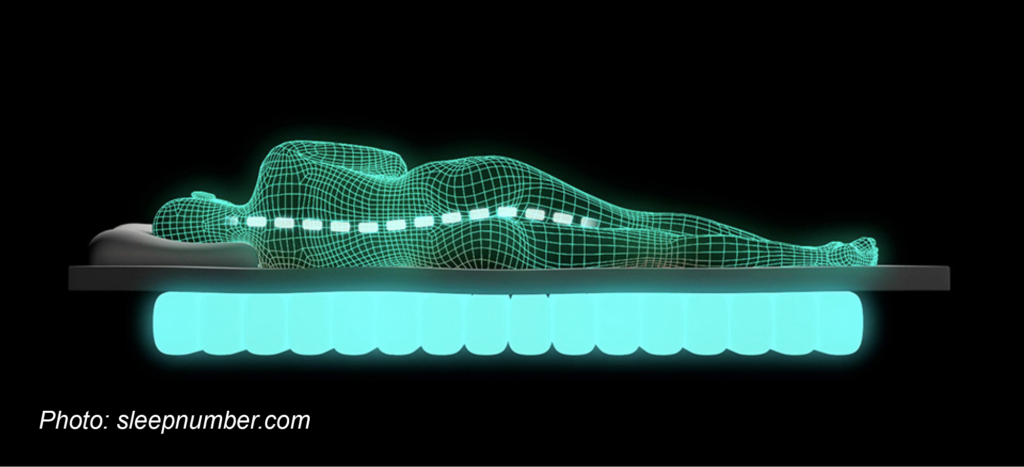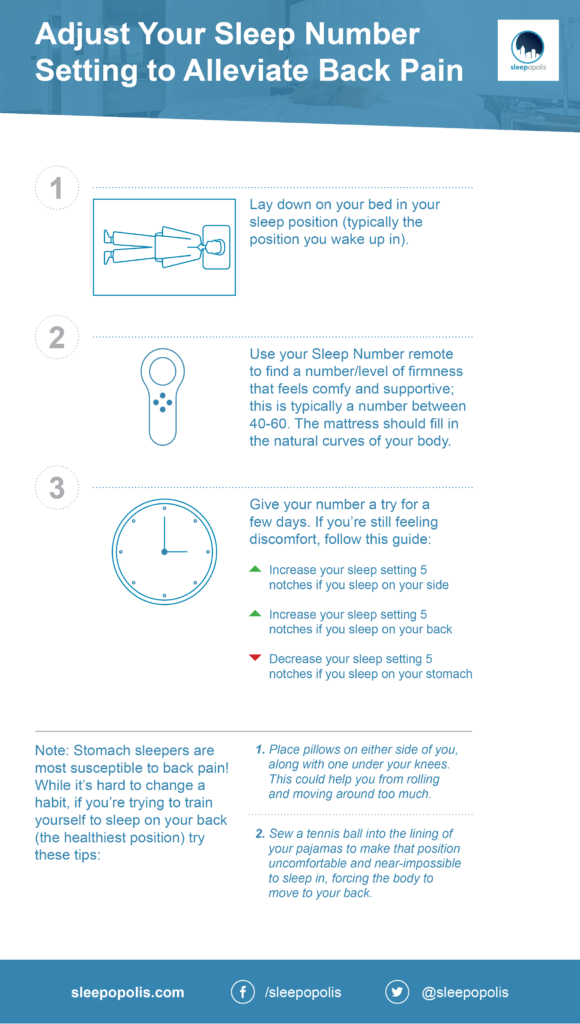More than 80 percent of Americans will suffer from back pain at some point in their lives. And let us tell you, back pain is a huge pain and can wreak havoc on our sleep.
Also check out: Best Mattresses for Back Pain
Luckily, Sleep Number and their adjustable mattresses are designed to help alleviate pain and provide contoured, pressurized support to your body, especially in areas like the back which can be especially susceptible to pain. Your sleep number setting, which is a number between 1-100 and indicates your bed’s level of firmness, can also be altered to help. However, no mattress or bed can replace seeing a medical professional, so make sure you seek advice from your doctor before anything else.
Note: The content on Sleepopolis is meant to be informative in nature, but it shouldn’t be taken as medical advice, and it shouldn’t take the place of medical advice and supervision from a trained professional. If you feel you may be suffering from any sleep disorder, chronic pain, or medical condition, please see your healthcare provider immediately.

Before we dive into finding a sleep setting that works for a sensitive back, here are a few tips to find the “right” sleep number setting for your body’s unique shapes and curves:
- If you sleep on your back, the mattress should “fill in” the small of your back
- If you sleep on your side, the mattress should “fill in” the curves of your side
- If you sleep on your stomach, well, simply make sure it doesn’t feel too firm on your belly
Sleep Number recommends giving your setting a two to five-night trial before deciding if you need to go up or down a few notches. If you’re still uncomfortable, try adjusting your setting by 5 or 10. (If you increase your setting, your mattress with become more firm. If you decrease your setting, it will become softer.)
Another indication your sleep number setting is working is based on your “sleep score.” If you have a bed that’s compatible with the SleepIQ® app (all the 360 smart beds are, along with the c4 model) you can review your sleep score data for a detailed look at how you’re sleeping, and what you could potentially do to sleep even more soundly.
Ok, now back to the back pain.
There is, unfortunately, no one-setting-fits all for people with back pain. There are just too many personal reasons for back pain, and thus no magic number to alleviate it. That said, there are helpful ways you can protect your back, all of which is dependent on your sleep position. Let’s dive in.

If you sleep on your side:
Side sleeping is a good start, and some experts say it’s the best sleeping position to protect your back. Bonus points if you draw your knees slightly up towards your chest like you’re entering a fetal position. You can even place a pillow between your knees to reduce stress on your hips and back
If you’re still in discomfort, Sleep Number recommends increasing your sleep setting 5-10 points.
Also check out: Best Mattress Topper for Back Pain
If you sleep on your back:
Good news! Back sleeping is said to be one of the best positions if you want to wake up well rested. If you’re a back sleeper by nature, but also deal with back pain, try putting a pillow under your knees or a small, soft pillow under your low back.
If you’re still in discomfort, Sleep Number recommends increasing your sleep setting 5-10 points.
If you sleep on your stomach:
Stomach sleeping doesn’t have the best reputation, since it can specifically cause strain to your back, along with your neck. If you can’t beat the habit, a soft pillow under your pelvis or lower abdomen could relieve some stomach pressure.
If you’re still in discomfort, Sleep Number recommends decreasing your sleep setting 5-10 points.
While no single number will end all of your aches and pains, it’s nice that you can experiment with your sleep number setting to find a firmness that will work for your specific body and its needs. It’s also crucial to talk with your doctor and come up with a plan that can once and for all combat the pain so you can sleep soundly each and every night.

Thank you for your insight about sleep which is for mean eye opener.